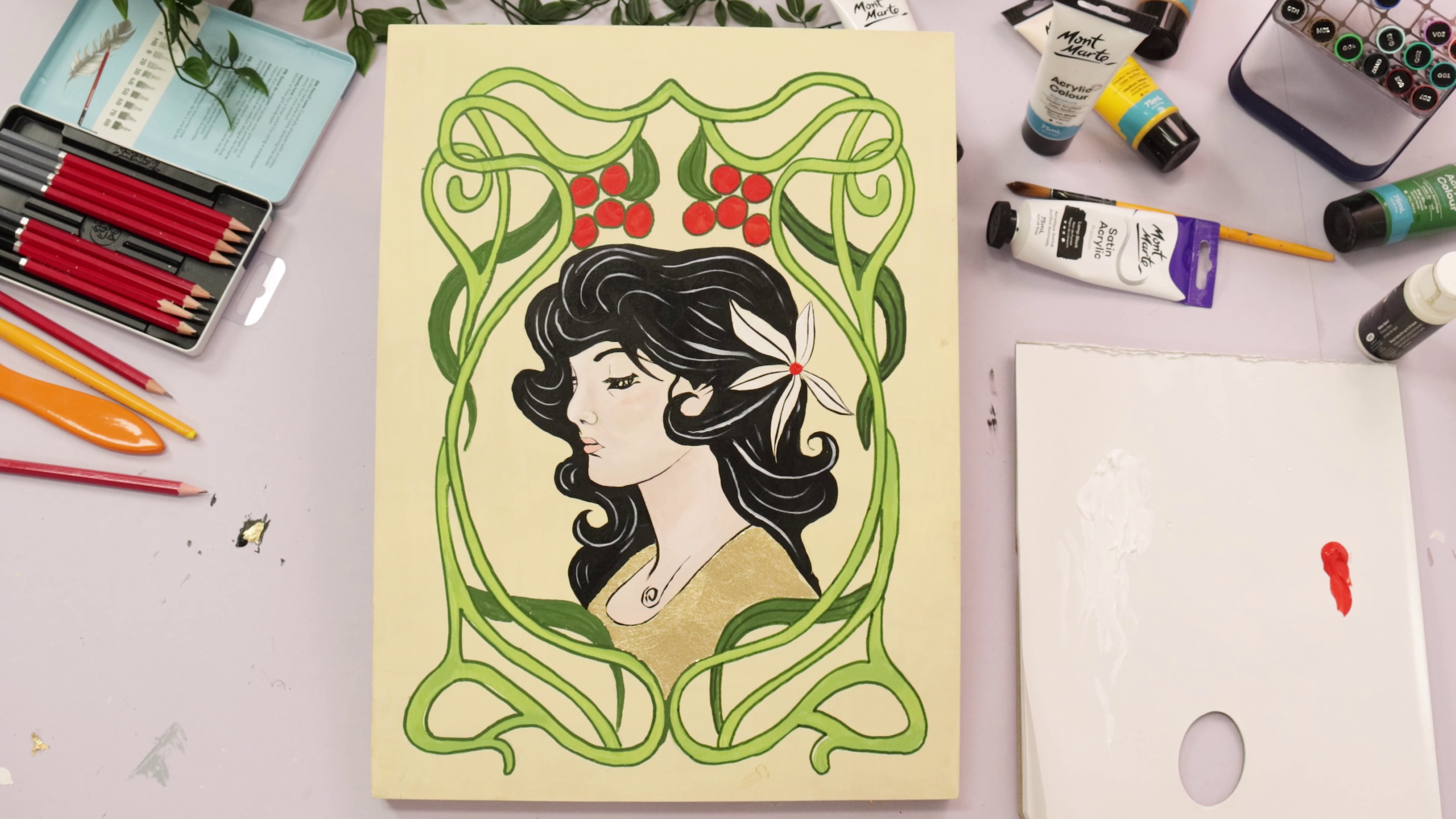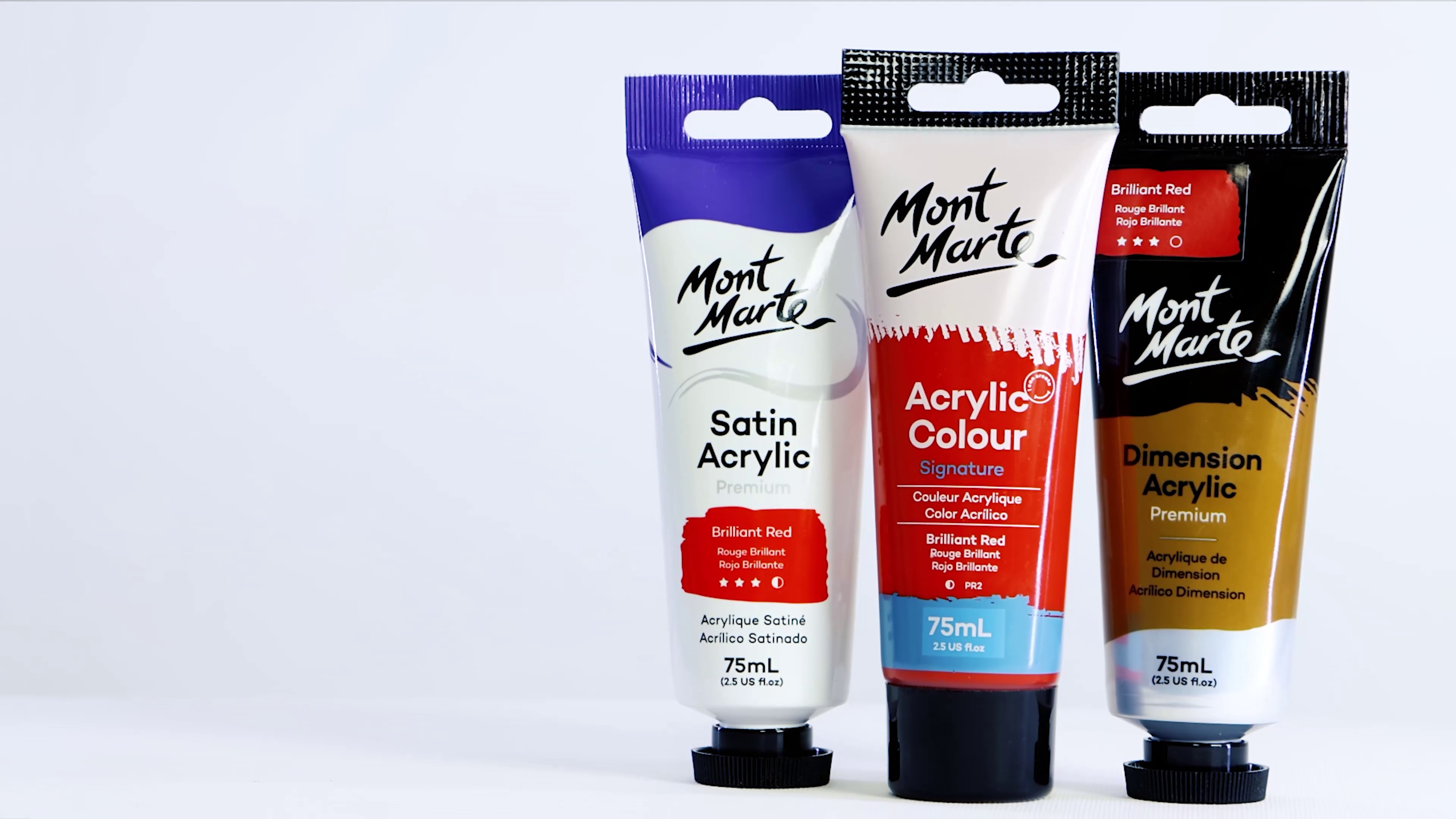When it comes to painting, a good brush can make all the difference. In this acrylic paint brush guide, we’re make things super simple and breaking down everything from size, brush type, and bristle hair so you can find the right acrylic paint brush for your next project.
Bristle hair
Depending on the medium you use, this will depend on the type of brush hair that you choose. Though synthetic or taklon brushes are best for acrylics, there are still alternatives if you’re wanting more control over your texture.
Natural hair bristles
Natural hair brushes are more expensive than synthetic brushes, although there are plenty of synthetic brushes that are made to replicate natural brush hairs, like sable hair brushes. From pony hair to sable, below are the natural bristle hair types.
Sable
Sable are often used for watercolours because of their delicate hairs, can be used for acrylics, particularly in thin detailed brushes or round brushes. A sable hair paint brush may be your preference over a synthetic, because it will hold its long, thin bristle shape. It will swell at the grip, then taper in finer at the end.
Hog bristle
The hog bristle is mainly used for oils but these brushes can still be used for acrylics, thanks to their stiff, dense hairs. Hog bristle hairs are split at the end, these splits are called ‘flags,’ and this is what lets them absorb a lot of paint. Apply impasto or thick layers with ease, with this type of coarse brush.
Goat hair
Goat hair is coarse but not as springy as a sable. Goat hair forms at a sharp point and is best used for blending or to create even glazes. Because of its sharp, fine bristle point, these brushes will be better for evening out surfaces instead of applying colour to canvases.
Pony
Pony hair is also used for brushes, this is because their bristles are soft and have a tapered tip, not to be confused with horsehair, which has a blunt tip and coarser fibres. Pony hair is better suited for thinner viscosities of acrylic and less detailed work, so try splaying the brush or using its side.
Badger hair
Badger hair, paint brushes have stiff bristles making them great for producing smooth, thick brush strokes. This type of brush is great for acrylics, and as a handy tip, can also be used to apply varnishes for a smooth finish.
Synthetic bristles
Synthetic bristle brushes are much easier for acrylic painting. This is because, they are simple to clean and can withstand the pressure and handling of acrylic paint.
Taklon
Taklon bristles mimic natural hair bristles like sable to spread paint evenly and smoothly. Acrylic paint dries quickly so pay attention to washing your brushes. Be sure to moisten the bristles with water first before going in with the acrylic paint, to protect your bristles.
Brush sizes
When it comes to paint brush size, all manufacturers are different. As a rough guide, the higher the number, the bigger the brush will be. Brushes above size 6 are perfect for broad, strokes and cover large surfaces. Brushes from size 4 to 6 are great for painting small areas and those brushes below size 4 are great for more detailed and intricate work. When it comes to flat brushes, these are measured by their width in inches, for example ½”.
Types of acrylic brushes
Round brushes

Round acrylic paint brushes are quite versatile, they can be used to create bold strokes and depending on their size, be used to create fine lines and cover large areas. Round brushes often have a narrower handle and feel like holding a pen or pencil.
A round brush is best used for adding in details or when you need a little more control over the flow of your paints. Our Mont Marte round brushes come in four different sizes or a set.
-
Sizes:
2, 6, 10, 16, 24
-
Techniques:
- Underpainting
- Scumbling
- Impasto
Filbert brushes

This type of acrylic paint brush is great for blending. Filbert brushes have a shovel shape with a rounded end and are available in a range of different sizes. Filbert brushes, because of their unique shape are great for blending. Our Mont Marte Filbert brushes come in four different sizes.
-
Sizes:
2, 6, 10, 16, 24 -
Techniques:
- Soften edges
- Washes
- Graduated colour
Flat brushes

Flat brushes are great for chiselling edges and creating long lines. When used flat, they can create long brush strokes and when used on their sides, create fine lines.
Our Mont Marte flat acrylic paint brushes come in two styles: long or short and four different sizes. A long flat brush can be used for a lighter application and a shorter brush can be used for broad, flat areas of colour.
-
Sizes:
Long: 2, 6, 10, 16, 24
Short: 12, 16, 20, 24 -
Techniques:
- Soften edges
- Washes
- Graduated colour
Fan brush

Blend colours with ease with a fan brush. Because of the fanned bristles this type of acrylic paint brush will create a soft, graduated colour and dabbing will create an unusual effect. Try using a clean fan brush to soften the edges, then go in with your fan brush to change the colour and blend out harsh lines and edges. Our Mont Marte fan brushes are available in three different sizes.
-
Sizes:
6, 10, 14
-
Techniques:
- Blends
- Graduated colour
Short Bright

If you’re looking to fill in tight areas of colour, this brush will be your perfect weapon. Brights have shorter and stiffer bristles than flat brushes, making them great for creating fine, continuous flat lines or even calligraphy. Our Mont Marte short bright, acrylic paint brushes are available in three different sizes.
-
Sizes:
2, 6, 10, 12, 16 -
Techniques:
- Textural effects
- Impasto
Wide Flat brushes

These brushes are great for covering large areas or creating clean, sharp edges such as abstract work. Plus, wide flat brushes are suitable to use with gesso or glaze products. Our Mont Marte wide flat brushes are available in three different widths.
-
Sizes:
25mm, 50mm, 75mm
-
Techniques:
- Textural effects
- Impasto
- Glazes
Rigger brush

Great for creating thin lines, these brush bristles are thin and long, making precise lines much easier to control. Our Mont Marte rigger brushes are available in two different sizes.
-
Sizes:
1, 3
-
Techniques:
- Outlines and fine lines
- Detailing
Angle brush

Great for shading tight corners and small areas, this angled brush provides greater control when shading around curved edges and shapes. Angled brushes can also be more comfortable for beginners, who might not be used to painting upright canvases on an easel.
Our Mont Marte angle brushes are available in five different sizes.
-
Sizes:
2, 6, 12, 16, 24
-
Techniques:
- Cut sharp edges
- Double loading
- Pointillism
Dagger brush

Because of the brush’s dagger-type shape, this brush is great for shading curved areas and edges. Because of its flexible bristles, this brush can create a range of sweeping strokes. Our Mont Marte dagger acrylic paint brushes are available in three different sizes.
-
Sizes:
1/8, 3/8, 5/8
-
Techniques:
- Cut sharp edges
- Double loading
- Crosshatching
Detailer brush

Great for fine detailing because of it’s short bristles, this brush is great for intricate areas or signing work. Our Mont Marte detailer brushes are available in three different sizes.
-
Sizes:
5/0, 2/0, 1.
-
Techniques:
- Outlines and fine lines
- Detailing
Liner brush

With long, thin bristles, this brush is perfect for light touch ups and subtle details. Use your liner brush to create intricate details and fine lines or lettering. You can even use ink with this type of brush, which may be a cheaper alternative to using a pen. Our Mont Marte liner brushes are available in three different sizes.
-
Sizes:
5/0, 1.
-
Techniques:
- Outlines and fine lines
- Detailing
We hope this guide to acrylic paint brushes has inspired you to give acrylics a whirl. Check out our range of acrylic brushes here or for more information on how to take care of your brushes and get the most out of them, check out our how to video here.
Show us what you’ve created using our brushes! #montmarteart or tag @montmarteart on Instagram or Facebook so we can see what you’re creating.





























